
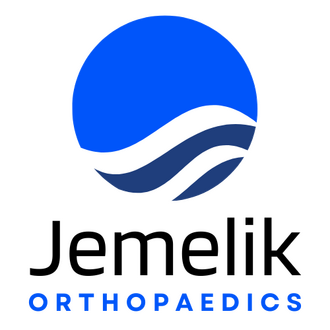
Mr Petr Jemelik, Upper Limb Specialist
Orthopaedic Surgeon and Trauma Consultant
Petr Jemelik is highly trained orthopaedic surgeon based in Waterford, specialised in shoulder, elbow, hand and wrist surgery. He deals with all aspect of upper limb pathologies, with special interest in arthroscopy, joint replacements and reconstructive surgeries.
About Mr Jemelik
My goal is simple: restore movement, function, and quality of life—so patients can return to the activities they love.
My Philosophy
Sport has always been a passion of mine. Movement, functionality, and mobility have shaped my life, from competitive football, snowboarding, and skiing to long-distance trail running and surfing. Early on, I was fascinated by how the body adapts, improves, and optimizes performance. Over time, my focus evolved from performance and competition to efficiency, longevity, and injury prevention- understanding how evidence-based assessment, movement analysis, and self-care can keep the body functioning at its best.I see orthopaedics the same way. The human body is a masterpiece. My role as a surgeon is not just to repair, but to tailor treatment to each patient’s needs, using surgery only as a last resort. Education is key—I strive to empower patients with knowledge, guiding them in making the best decisions for their health.
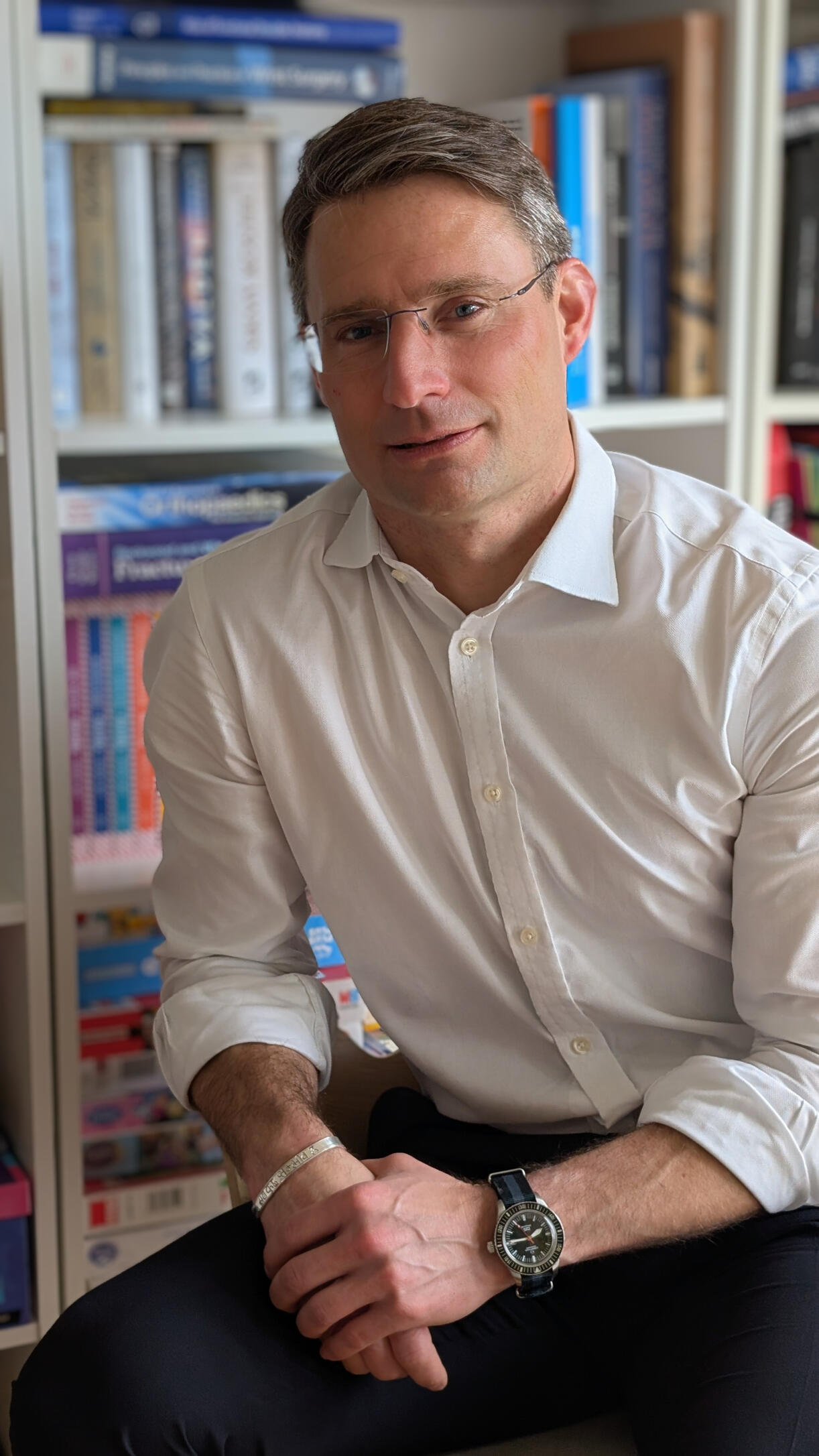
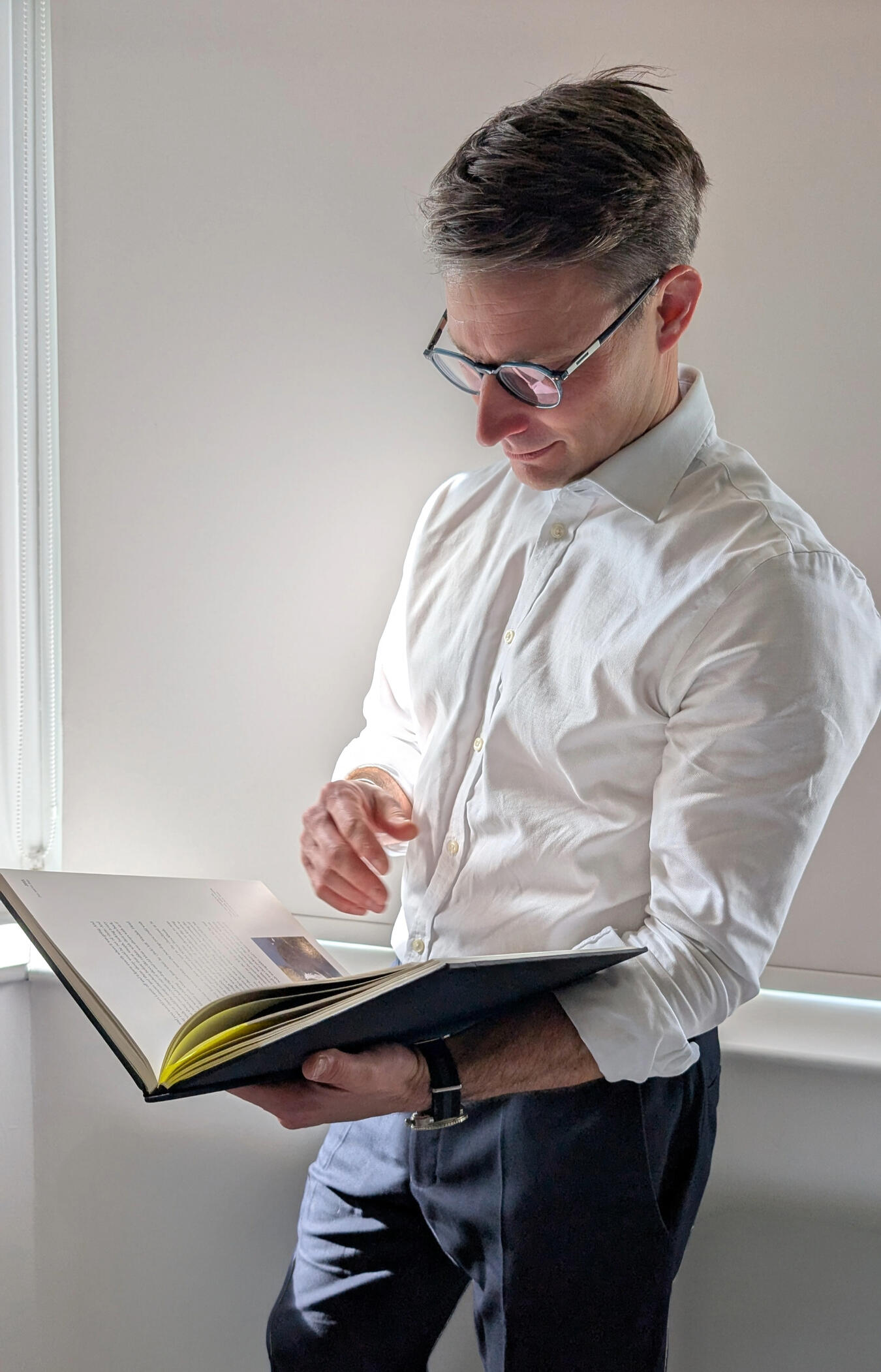
My Background
I am a Consultant Trauma and Orthopaedic Surgeon at University Hospital Waterford, specializing in upper limb surgery, including the shoulder, elbow, hand and wrist. My expertise spans arthroscopy, arthroplasty, soft tissue reconstruction and trauma surgery.I completed my specialist training in the Czech Republic in April 2008 with honors. Throughout my career, I have trained in multiple leading medical institutions across the UK, the US, Germany, Austria, Switzerland, Italy and Ireland, gaining extensive international experience.
Shoulder
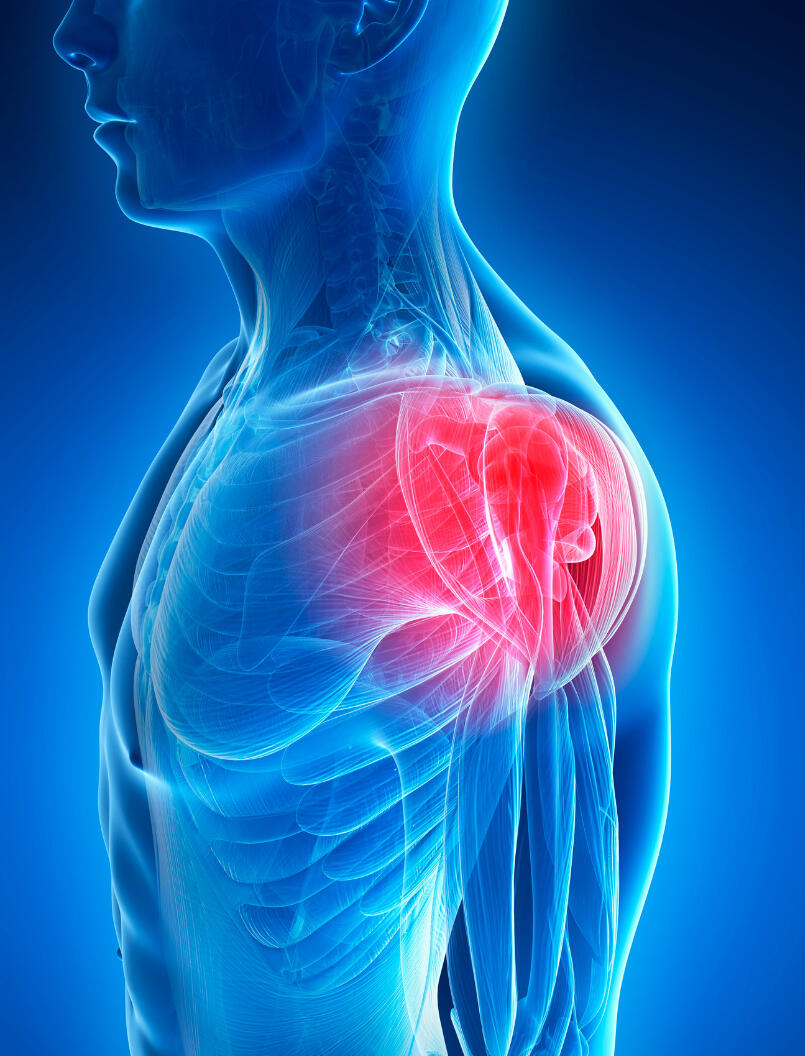
Click to read diagnosis and treatment information for each condition.
Elbow
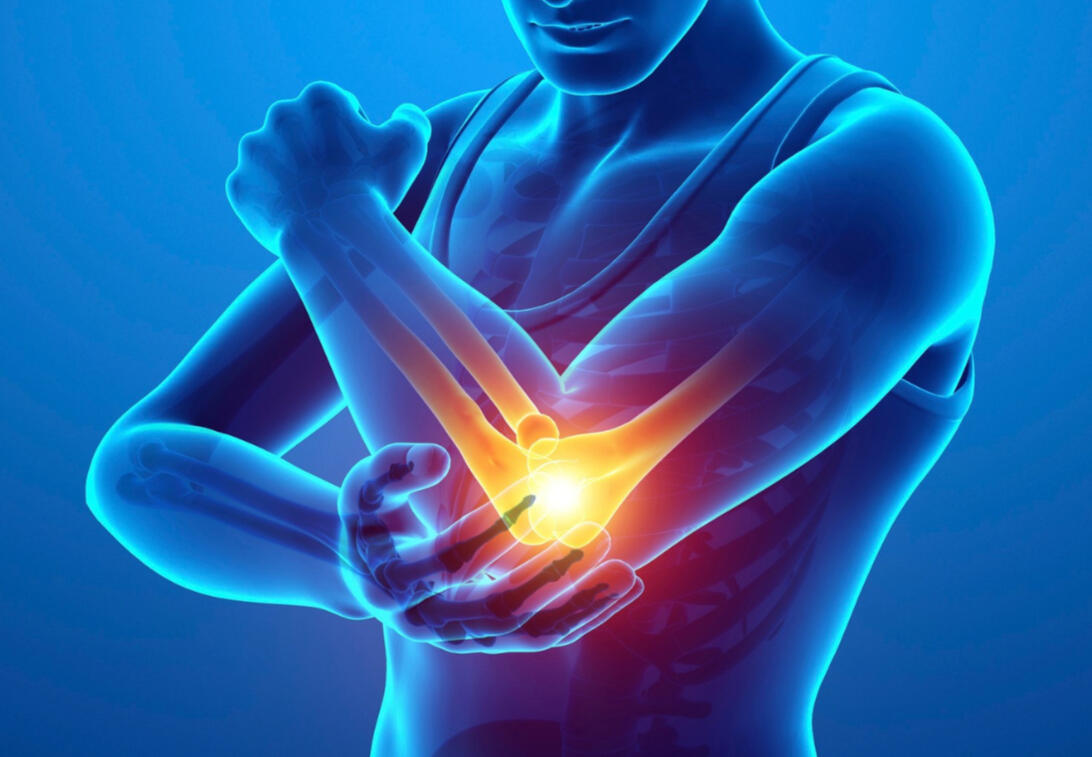
Click to read diagnosis and treatment information for each condition.
Hand and Wrist
Click to read diagnosis and treatment information for each condition.
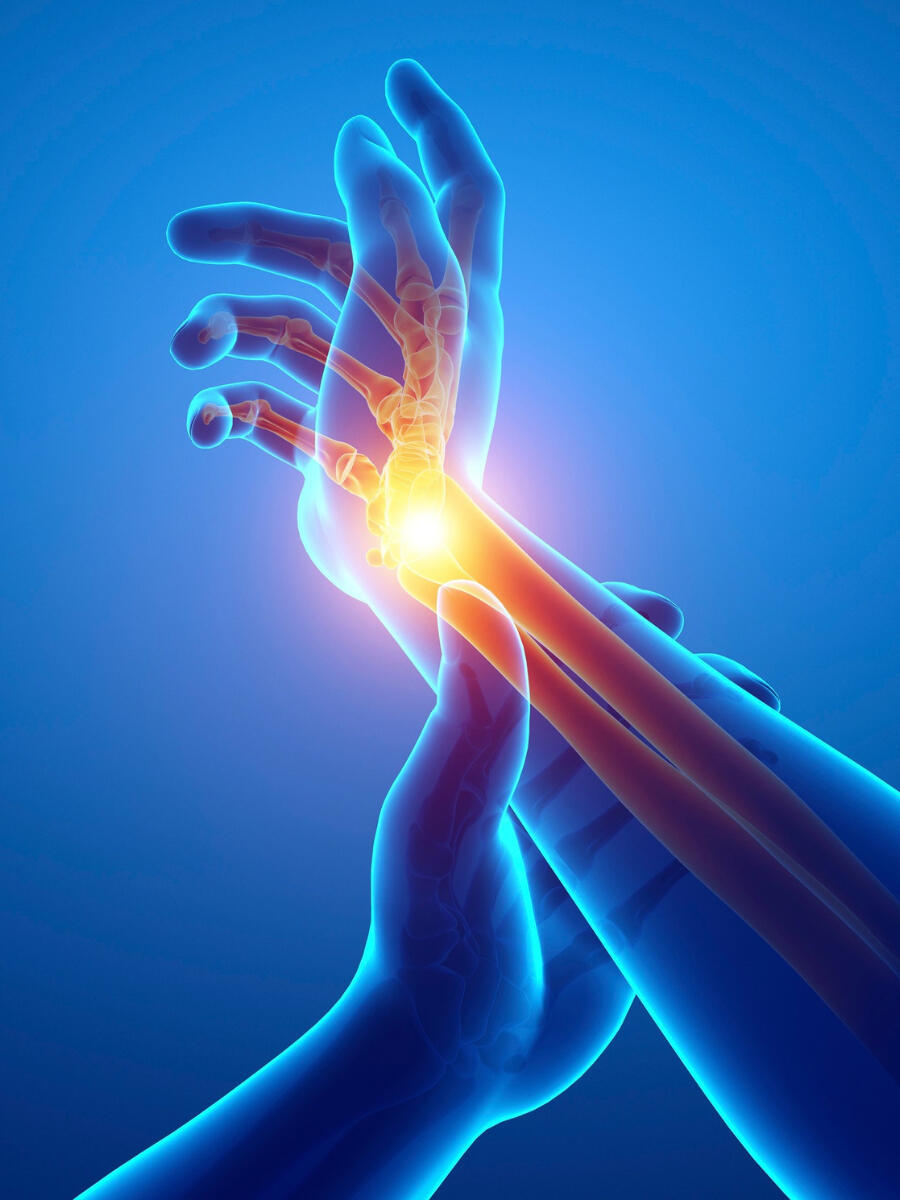
Make an Appointment

Clinic Secretary: Orla Murphy
(083) 071 1214
[email protected]
University Hospital Waterford
Dunmore Rd, Waterford
X91 ER8E
Patient Information
Your First Appointment
Dressing for Your Appointment
Wear or bring clothing that allows easy access to the area being assessed:
Shoulder: A loose-fitting top or sleeveless shirt so I can examine both your shoulder and scapula.
Elbow, Wrist, Hand – A short-sleeved top or one with sleeves that can be easily rolled up. Comparative Examination – I will also assess the opposite side, so access to both arms is important.Medical Documents and Imaging
Please bring any recent X-rays, MRIs, CT scans, or relevant medical reports related to your condition. Having these in advance helps with a more accurate diagnosis and treatment plan.Support Person
If you’d feel more comfortable, you’re welcome to bring a friend, family member, or caregiver to your consultation.
If you have any questions before your visit, feel free to reach out by email or phone.
Post Surgery Physio Protocols
Below you will find comprehensive post-operative physiotherapy and recovery guidelines.
Please contact us if you have any questions.
© Jemelik Orthopaedics 2025
Cookie Policy | Terms and Conditions
University Hospital Waterford
[email protected]
(083) 071 1214
My Background
I am a Consultant Trauma and Orthopaedic Surgeon at University Hospital Waterford, specializing in upper limb surgery, including the shoulder, elbow, hand and wrist. My expertise spans arthroscopy, arthroplasty, soft tissue reconstruction and trauma surgery.I completed my specialist training in the Czech Republic in April 2008 with honors. Throughout my career, I have trained in multiple leading medical institutions across the UK, the US, Germany, Austria, Switzerland, Italy and Ireland, gaining extensive international experience.Beyond my hospital work, I have served as a trauma surgeon on multiple missions with Médecins Sans Frontières (Doctors Without Borders) in Africa, the Middle East, and Afghanistan. These missions have taken me to conflict zones and resource-limited settings, where I have provided surgical care to patients affected by war and humanitarian crises.In November 2019, I was appointed as a permanent Consultant at University Hospital Waterford, marking the beginning of a new chapter in my professional journey. Over time, I have established and expanded my upper limb and trauma services, operating across two hospitals: University Hospital Waterford and Kilcreene Orthopaedic Hospital. My role includes additionally managing complex upper limb trauma cases and receiving tertiary referrals from South East of Ireland.I am also passionate about training and teaching, both nationally under the umbrella of the Royal College of Surgeons in Ireland (RCSI) and University College Cork (UCC), and internationally through AO Trauma.Beyond clinical practice and teaching, I have a strong passion for research, continuously striving to advance orthopaedic knowledge and improve patient care. I am actively involved in numerous research projects and have published my findings in high-impact, peer-reviewed journals. My dedication to research has recently led me back to academia—I embarked on a PhD at the University College of Cork (UCC) in 2024, further deepening my commitment to innovation and evidence-based practice in orthopaedic surgery.I am an active member of several orthopaedic societies, including:
SECEC (European Society for Surgery of the Shoulder and Elbow)
ISES (Irish Society for Shoulder and Elbow Surgery)
EBJIS (European Bone and Joint Infection Society)
IHSS (Irish Hand Surgery Society)
CSOT (Czech Society for Orthopaedics and Traumatology)
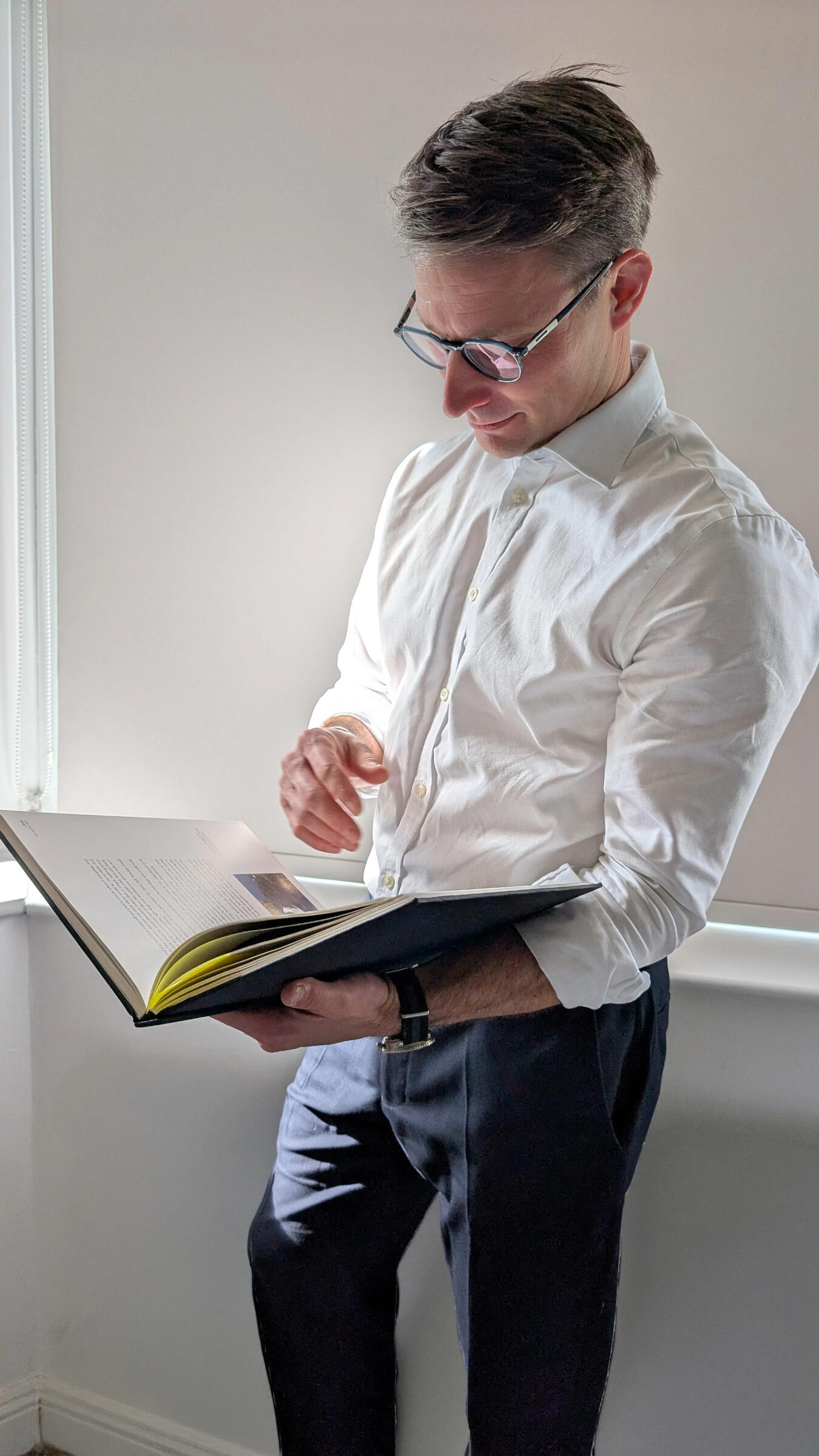
My Philosophy
Sport has always been a passion of mine. Movement, functionality, and mobility have shaped my life, from competitive football, snowboarding, and skiing to long-distance trail running and surfing. Early on, I was fascinated by how the body adapts, improves, and optimizes performance. Over time, my focus evolved from performance and competition to efficiency, longevity, and injury prevention- understanding how evidence-based assessment, movement analysis, and self-care can keep the body functioning at its best.I see orthopaedics the same way. The human body is a masterpiece. My role as a surgeon is not just to repair, but to tailor treatment to each patient’s needs, using surgery only as a last resort. Education is key—I strive to empower patients with knowledge, guiding them in making the best decisions for their health.As my father, a respected neurologist, said, "A doctor is like a hairdresser—offering skills and expertise while letting the patient choose the haircut they prefer."I believe knowledge is king, and learning never ends. I grow by stepping out of my comfort zone—engaging with peers, challenging myself through research, discussions with students and colleagues, and regularly visiting international experts to exchange knowledge and refine my skills. My humanitarian work further tests my abilities in diverse environments, cultures, and high-risk conditions, offering invaluable perspectives.My goal is simple: restore movement, function, and quality of life—so patients can return to the activities they love.

Shoulder Diagnoses & Treatments
AC Joint Arthritis
The AC joint, located at the top of the shoulder, can develop arthritis due to wear and tear, causing pain, stiffness, and discomfort with overhead or across-body movements. Diagnosis is confirmed through examination, X-ray, and sometimes MRI.Treatment includes physiotherapy, anti-inflammatory medications, and steroid injections. If pain persists, I do arthroscopic AC joint decompression, where I remove a small portion of the collarbone to relieve pressure, reduce pain, and restore function.
AC Joint Instability
AC joint instability occurs when the ligaments supporting the joint are stretched or torn, often due to trauma. This causes pain, a visible bump, and weakness with overhead movements. Diagnosis is confirmed through examination, X-ray, and sometimes MRI.Mild cases are treated with physiotherapy and pain management. In severe cases, I could offer AC joint stabilization surgery, where I reconstruct ligaments and the collarbone is secured to restore stability and function.
Impingement Syndrome
Impingement syndrome occurs when the rotator cuff tendons and bursa are compressed between the shoulder blade and upper arm bone, causing pain and limited movement, especially with overhead activities. It is diagnosed through clinical examination and confirmed with X-ray or MRI.Treatment includes physiotherapy, anti-inflammatory medications, and steroid injections. If symptoms persist, I offer patients arthroscopic release to create more space for the tendons by removing inflamed tissue and shaving down bone spurs, relieving pain and restoring movement.
Frozen Shoulder
Frozen shoulder, or adhesive capsulitis, causes stiffness and pain due to thickening and tightening of the shoulder capsule. It develops gradually, often after injury, surgery, or prolonged immobility. Diagnosis is based on clinical examination and confirmed with imaging if needed.Treatment includes physiotherapy, anti-inflammatory medications, and steroid injections. If movement remains severely restricted, I prefer to do arthroscopic release of adhesions to free the tightened capsule, restoring mobility and reducing pain.
Biceps Pathology
Traumatic Biceps Tear
A sudden rupture of the proximal biceps tendon can cause a visible Popeye sign, with bruising and weakness in the arm. I usually treat conservatively, as most patients regain function without surgery. Physiotherapy and pain management are the main treatments.Chronic Biceps Pain
Overuse or degeneration can lead to persistent pain at the front of the shoulder, often with clicking or weakness. If symptoms persist despite physiotherapy and steroid injections, I offer arthroscopic biceps tenotomy (cutting the tendon) or biceps tenodesis (reattaching it to the bone).
Shoulder Chronic Instability
Recurrent shoulder dislocations or feeling of looseness can result from ligament damage, often after trauma. This leads to pain, weakness, and a higher risk of further dislocations. Diagnosis is confirmed through clinical examination, X-ray, and MRI to assess ligament and bone damage.Treatment depends on severity. Mild cases may be managed with physiotherapy to strengthen shoulder stability. If instability persists, I can do arthroscopic shoulder stabilization to repair and tighten the damaged ligaments. In cases with significant bone loss, open Latarjet surgery is an option, where I transfer a bone graft to restore stability and prevent further dislocations.
Rotator Cuff Pathology
Rotator cuff tears cause shoulder pain, weakness, and difficulty lifting the arm, often due to injury or degeneration. Diagnosis is confirmed through clinical examination, ultrasound, or MRI.If the tear is repairable, I can perform arthroscopic rotator cuff repair, where the torn tendon is reattached to the bone using keyhole surgery. In cases where the tear cannot be repaired, I can offer arthroscopic-assisted lower trapezius transfer or superior capsular reconstruction to restore shoulder function and stability. These advanced procedures help compensate for lost tendon function and reduce pain.
Shoulder Arthritis
Shoulder arthritis causes pain, stiffness, and loss of movement due to cartilage wear in the joint. Diagnosis is confirmed through clinical examination and X-rays, sometimes supplemented with MRI or CT scans.If non-surgical treatments such as physiotherapy, pain management, and injections no longer provide relief, I can perform shoulder replacement surgery.Depending on the condition of the rotator cuff, this may be:
Anatomical Shoulder Replacement for patients with an intact rotator cuff, preserving normal joint mechanics.
Reverse Shoulder Replacement for patients with a damaged rotator cuff, using a different design to restore function and reduce pain.
Trauma
Acute Trauma
Recent fractures of the shoulder, clavicle, and upper arm require timely stabilization for proper healing and function. Diagnosis is confirmed with X-rays, sometimes CT scans for complex cases.I can perform all types of fixation, including arthroscopic-assisted techniques and open surgery, using plates, screws, nails, or suture-based methods to restore stability.Old Trauma
Malunited fractures, non-healing fractures (nonunions), or post-traumatic arthritis can cause pain and dysfunction. Depending on the case, I can offer corrective surgery, revision fixation, or joint replacement to restore movement and reduce pain.
Elbow Diagnoses and Treatments
Ulnar Nerve Syndrome
Ulnar nerve syndrome, also known as cubital tunnel syndrome, occurs when the ulnar nerve is compressed at the elbow, often causing numbness, tingling, or weakness in the ring and little fingers. Symptoms may worsen with elbow bending or pressure.Diagnosis is confirmed through clinical examination and nerve conduction studies.If symptoms persist despite activity modification and splinting, I can perform an ulnar nerve release, a surgical procedure to relieve pressure on the nerve and restore function.
Tennis Elbow (Lateral Epicondylitis)
Tennis elbow is a painful condition caused by overuse and degeneration of the tendons on the outside of the elbow. It leads to pain during gripping, lifting, or twisting movements.Diagnosis is based on clinical examination and, if needed, imaging such as ultrasound or MRI.Most cases improve with rest, physiotherapy, and injections. If pain persists, I can perform a Neer procedure, where the damaged tendon tissue is removed and the area is cleaned using a minimally invasive surgical technique to relieve pain and restore strength.
Golfer’s Elbow (Medial Epicondylitis)
Golfer’s elbow is caused by overuse and degeneration of the tendons on the inside of the elbow, leading to pain with gripping, lifting, or wrist flexion.Diagnosis is made through clinical examination and supported by imaging if needed.Most cases respond to physiotherapy, rest, and injections. If symptoms persist, I can perform minimally invasive surgery to remove the damaged tendon tissue and clean the area to relieve pain and restore function.
Chronic Instability of Elbow
Chronic elbow instability often results from ligament injuries, dislocations, or repetitive strain, leading to a feeling of looseness, clicking, or pain during movement.Diagnosis is based on clinical examination and confirmed with imaging such as MRI or CT.If conservative treatment fails, I can perform open stabilisation surgery, where the damaged ligaments are reconstructed or reinforced to restore stability, prevent further dislocations, and allow safe return to activity.
Distal Biceps Tear
A distal biceps tear happens when the tendon attaching the biceps muscle to the forearm bone ruptures, often during a sudden lifting movement. This leads to sharp pain, bruising, weakness in bending the elbow or turning the forearm, and a visible change in the shape of the arm.Diagnosis is confirmed through examination and MRI.For physically active patients, surgical repair is usually needed to restore strength and function. If the tendon is too shortened or retracted to reattach directly, I can use a donor tendon to rebuild the connection and restore movement.
Elbow Arthritis
Elbow arthritis causes pain, stiffness, and reduced motion due to cartilage wear, often from ageing, previous injury, or inflammatory conditions.Diagnosis is confirmed through examination and X-rays.When non-surgical treatments no longer provide relief, I can perform partial or total elbow replacement, depending on the extent of joint damage. This restores movement, reduces pain, and improves daily function.
Elbow Trauma
Acute Trauma
Recent fractures or dislocations of the elbow require timely and precise treatment to restore joint alignment and function.Diagnosis is confirmed with X-rays and sometimes CT scans.I can perform all types of open fixation, using plates, screws, suture anchors or pins to stabilise the injury and promote healing.Old Trauma
Previous elbow injuries may lead to chronic instability, malunion, nonunion, stiffness, or arthritis.In these cases, I offer open stabilisation, corrective surgery, revision fixation, or joint replacement (hemiarthroplasty of elbow or total elbow arthroplasty) to restore mobility, reduce pain, and improve function.
Wrist/Hand Diagnoses & Treatments
Wrist Tendinopathies
Wrist tendinopathies are caused by overuse or irritation of the tendons around the wrist, leading to pain, swelling, and difficulty with hand or wrist movements. Common conditions include De Quervain’s tenosynovitis and flexor/extensor tendinopathies.Diagnosis is made through clinical examination and, if needed, ultrasound. Most cases respond to rest, splinting, physiotherapy, or steroid injections.If symptoms persist, I can perform a surgical release, where the tight or inflamed tendon sheath is opened to relieve pressure and allow smooth tendon movement.
Carpal Tunnel Syndrome
Carpal tunnel syndrome is caused by compression of the median nerve in the wrist, leading to numbness, tingling, and weakness in the hand, especially at night or with repetitive use.Diagnosis is confirmed through clinical examination and nerve conduction studies.If symptoms don’t improve with splinting or injections, I can perform an open or arthroscopic carpal tunnel release. The pressure on the nerve is relieved by cutting the tight ligament, helping restore sensation and hand function.
Ulnar Nerve Syndrome – Guyon’s Canal
Ulnar nerve compression at the wrist, known as Guyon’s canal syndrome, causes numbness, tingling, or weakness in the ring and little fingers, especially during hand use. It can be caused by repetitive pressure, cysts, or thickened ligaments.Diagnosis is confirmed through clinical examination and nerve conduction studies.If symptoms do not improve with conservative treatment, I can perform an open Guyon’s canal release, a surgical procedure to relieve pressure on the ulnar nerve at the wrist and restore hand function.
Ganglions
Ganglions are fluid-filled lumps that commonly form around the wrist or fingers, often near joints or tendons. They may vary in size, cause discomfort, or interfere with movement, though some remain painless.Diagnosis is usually based on clinical examination and confirmed with ultrasound if needed.If the ganglion is painful, growing, or limiting function, I can perform a surgical excision, removing the cyst and its root to reduce the chance of recurrence.
TFCC Injury
A TFCC (triangular fibrocartilage complex) injury affects the cartilage and ligaments on the small finger side of the wrist, often causing pain, clicking, and weakness with twisting or gripping. It can result from trauma or repetitive strain.Diagnosis is confirmed by clinical examination and MRI.If symptoms don’t improve with rest, splinting, or physiotherapy, I can perform arthroscopic treatment—either excision of torn tissue or repair of the damaged structures—to relieve pain and restore stability to the wrist.
Wrist Arthritis
Wrist arthritis affecting the radiocarpal and intercarpal joints can lead to pain, stiffness, and reduced function, often due to previous injury, wear and tear, or inflammatory disease.Diagnosis is confirmed through examination and X-rays.If conservative treatment fails, I can perform arthroscopic or open surgery, depending on the severity and location. Open surgical options include partial fusion between selected carpal bones to reduce pain while preserving some movement, or total wrist fusion to provide stability and pain relief when the entire joint is affected.
Wrist Instabilities
Wrist instability occurs when ligaments between the carpal bones or around the distal radioulnar joint (DRUJ) are damaged, often due to trauma or repetitive strain. This can lead to pain, weakness, clicking, or a sense of looseness during wrist or forearm movement.Diagnosis is confirmed through clinical examination, X-rays, and sometimes MRI or wrist arthroscopy.If symptoms persist despite conservative treatment, I can perform open stabilisation surgery to repair or reconstruct the damaged ligaments. In more complex or chronic cases, I can use donor tissue (tendon graft) to restore stability in the carpus or DRUJ and improve function.
Dupuytren’s Contracture
Dupuytren’s contracture is a condition where thickened tissue in the palm gradually pulls one or more fingers into a bent position. It is usually painless but can limit hand function over time.Diagnosis is made through clinical examination.When the contracture affects hand function, I can perform open surgery to remove the thickened cords and release the affected fingers, helping to restore movement and improve hand use.
Trigger Finger
Trigger finger occurs when a tendon in the finger becomes irritated and catches during movement, causing pain, stiffness, or a locking sensation when bending or straightening the finger.Diagnosis is made through clinical examination.If symptoms persist despite splinting or injections, I can perform a trigger finger release, a minor procedure to free the tendon and allow smooth, pain-free movement.
Base of Thumb Arthritis
Arthritis at the base of the thumb (CMC joint) is a common condition causing pain, swelling, and weakness with gripping or pinching. It often results from wear and tear and is confirmed by examination and X-rays.If splints, physiotherapy, and injections no longer provide relief, I can perform an interposition arthroplasty. This procedure removes the damaged joint surface and places soft tissue between the bones to relieve pain and maintain thumb movement.
Finger Arthritis
Finger arthritis causes pain, stiffness, and reduced hand function due to joint wear, often from ageing, injury, or inflammatory conditions. It most commonly affects the joints at the base or middle of the fingers.Diagnosis is confirmed through examination and X-rays.If non-surgical treatments no longer help, I can offer joint replacement surgery to relieve pain and preserve movement, or fusion surgery to stabilise the joint and eliminate pain in cases where motion is less critical.
Finger Joint Instabilies
Instability in the finger joints can result from ligament injuries, leading to pain, swelling, and a feeling of looseness or a joint giving way. It can follow trauma or repetitive strain.Diagnosis is confirmed through clinical examination and imaging.If instability persists, I can perform open surgery to stabilise the joint using mini anchors and sutures to repair the damaged ligaments. In chronic cases with insufficient tissue, I can reconstruct the ligaments using donor tissue to restore joint stability and function.
Wrist and Hand Trauma
Acute Trauma
Fractures, dislocations, and tendon or ligament injuries in the wrist and hand require timely treatment to ensure proper healing and restore function.Diagnosis is confirmed with examination and X-rays, sometimes CT or MRI.I can perform all types of fixation, including arthroscopic-assisted or open surgery, using plates, screws, pins, or sutures depending on the injury.Old Trauma
Past injuries that didn’t heal correctly can lead to stiffness, deformity, pain, or instability.In such cases, I offer corrective surgery, revision fixation, reconstruction, or joint fusion/replacement to improve hand and wrist function and reduce discomfort.
Terms and Conditions
These terms and conditions (the "Terms and Conditions") govern the use of www.jemelikorthopaedics.ie (the "Site"). This Site is owned and operated by Jemelik Orthopaedics. By using this Site, you indicate that you have read and understand these Terms and Conditions and agree to abide by them at all times.Intellectual Property
All content published and made available on our Site is the property of Jemelik Orthopaedics and the Site's creators. This includes, but is not limited to images, text, logos, documents, downloadable files and anything that contributes to the composition of our Site.Limitation of Liability
Jemelik Orthopaedics and our directors, officers, agents, employees, subsidiaries, and affiliates will not be liable for any actions, claims, losses, damages, liabilities and expenses including legal fees from your use of the Site.Indemnity
Except where prohibited by law, by using this Site you indemnify and hold harmless Jemelik Orthopaedics and our directors, officers, agents, employees, subsidiaries, and affiliates from any actions, claims, losses, damages, liabilities and expenses including legal fees arising out of your use of our Site or your violation of these Terms and Conditions.Applicable Law
These Terms and Conditions are governed by the laws of Ireland.Severability
If at any time any of the provisions set forth in these Terms and Conditions are found to be inconsistent or invalid under applicable laws, those provisions will be deemed void and will be removed from these Terms and Conditions. All other provisions will not be affected by the removal and the rest of these Terms and Conditions will still be considered valid.Changes
These Terms and Conditions may be amended from time to time in order to maintain compliance with the law and to reflect any changes to the way we operate our Site and the way we expect users to behave on our Site. We will notify users by email of changes to these Terms and Conditions or post a notice on our Site.Contact Details
Please contact us if you have any questions or concerns.
[email protected]

